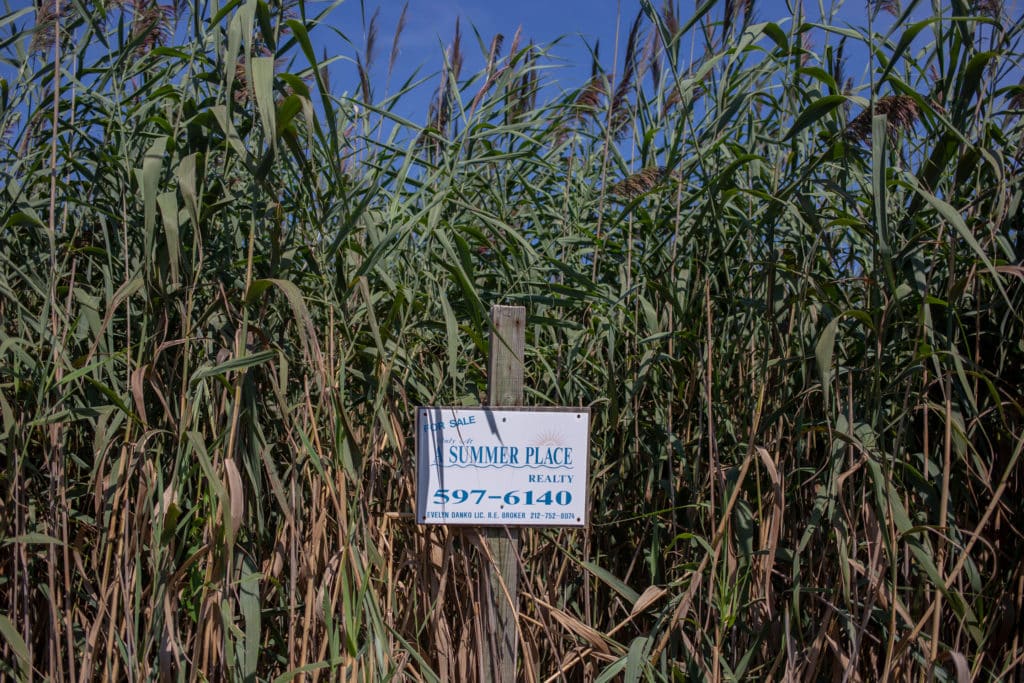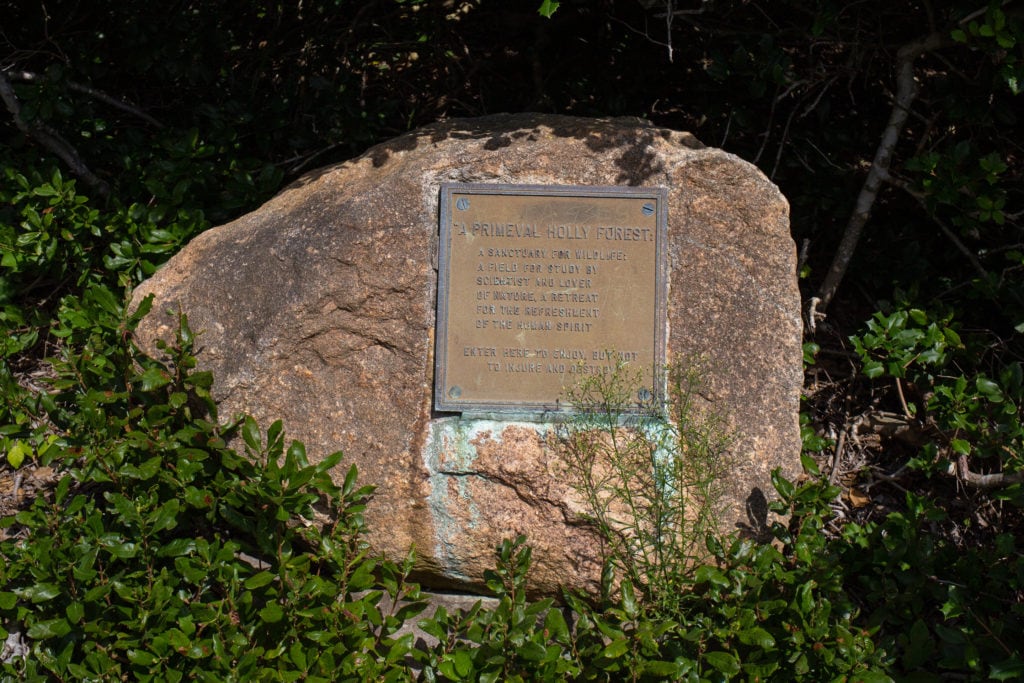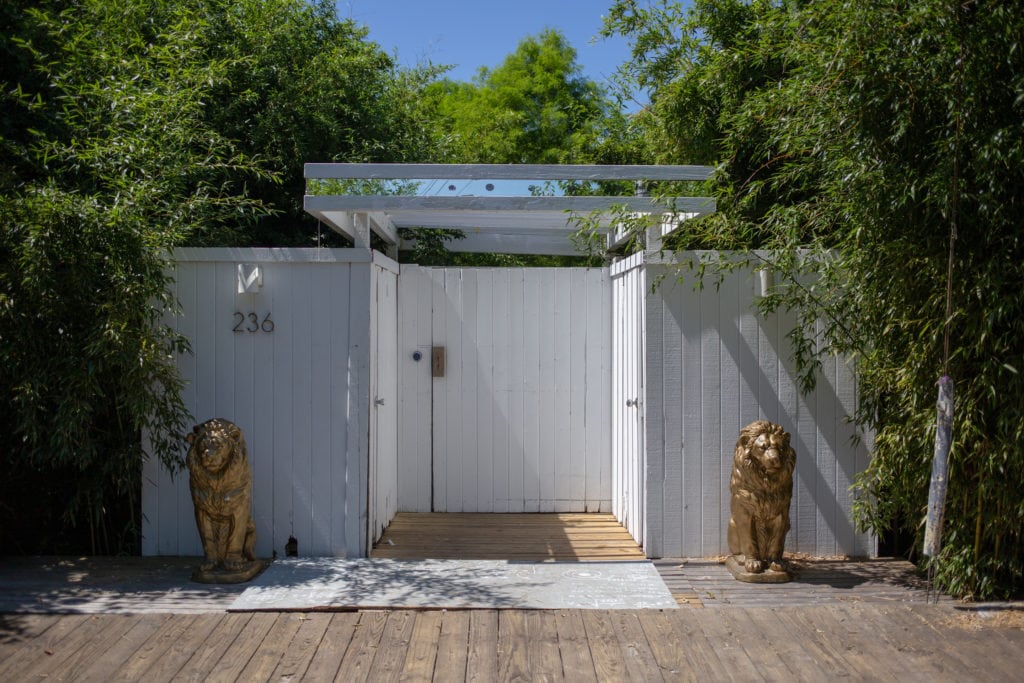Fire Island is only about 60 miles away from New York City, but it feels much, much farther. Maybe it’s the cumulative effect of the various modes of transportation I have to take to reach the (mostly) car-free island, including three subway stops, two different Long Island Railroad trains, one shuttle bus, and finally, a ferry. But I think it’s more than physical distance at play here—in fact, when I step onto the dock into Cherry Grove, a small community located in the center of the 31-mile-long island, I am most surprised by what I don’t feel: out of place.
Door-to-dock, my trip to Fire Island takes less than three hours, but in some ways my journey feels much longer. It took about 20 years from the time I realized that I preferred women to this Sunday afternoon in late August, when my first-ever serious girlfriend meets me at the ferry, grabs my heavy bags, and welcomes me to paradise.

Since at least the 1940s, two Fire Island hamlets—Cherry Grove and The Pines—have been known as safe havens for the LGBTQ community. Visitors are welcomed to the island by two enormous flags flapping fiercely in the breeze: a rainbow pride flag, and the U.S. flag, both of equal importance here. The island is also home to New York state’s only federally-managed stretch of wilderness, which includes protected beaches, dunes, and maritime forests.
Island refuge
Fire Island is a barrier island, both physically and metaphorically. The landmass, which is an average of 3.9 miles off the south shore of Long Island, protects the coastline from storms; its inhabitants come seeking refuge from a world that is at best tolerant, and at worst downright dangerous.
Even in New York City—home to the Stonewall National Monument and host of this year’s World Pride Celebration—identifying as part of the LGBTQ community comes with real risk. Despite a decrease in crime overall, hate crimes based on sexual orientation increased by 45 percent in 2019, according to the NYPD.
-
Photo: Alexandra Charitan -
Photo: Alexandra Charitan -
Photo: Alexandra Charitan -
Photo: Alexandra Charitan -
Photo: Alexandra Charitan -
Photo: Alexandra Charitan -
“Things You Sit On” is an installation by Martin Michael Fitzgerald III. | Photo: Alexandra Charitan -
Photo: Alexandra Charitan -
Photo: Alexandra Charitan
The first house was built in Cherry Grove in 1795, but it wasn’t until a hurricane wiped out most of the island in 1938 that it was reborn as a queer destination. Still reeling from the Great Depression and desperate to fill their rental properties, landlords couldn’t afford to discriminate.
“By the nature of its isolation and beauty, it became a safe haven for gay people, where they could not be afraid of repercussions from work, or anger from their families about being gay,” Thom “Panzi” Hansen, president of the Cherry Grove Arts Project, told the Huffington Post.


While there have been great strides in acceptance and notable legal victories for the LGBTQ rights movement, Cherry Grove still feels utopian. People of all genders, races, sizes, and ages pass each other with waves and friendly greetings; they come to the island to slow down, lower their guards, and relax by the shore or the pool. Every body is a beach body here and something as simple as holding my girlfriend’s hand no longer feels revolutionary. No place is perfect, but on a hazy, late summer day, Cherry Grove gets pretty close.
Beaches and boardwalks
Tame, white-tailed deer far outnumber the year-round residents (about 15), but in the summer the population of Cherry Grove swells to 2,000. The town has 250 homes, connected by a series of narrow pedestrian boardwalks, and two miles of beaches along its Atlantic Coast (the Great South Bay separates Fire Island from the mainland).

The houses have cheeky names—”Beau-He-Men Rhapsody,” “A Whole New World,” “Boys in the Attic,” to name a few—and 26 of the properties are on the waterfront. Most of the buildings are small, cedar-shingle cottages, but there are a few larger hotels and restaurants; the Belvedere Guest House for Men is a gleaming white Venetian-style palace, whose elaborate towers, domes, and fountains are visible for miles.
In New York City I rely on public transportation, but I never realized how intrusive and isolating car traffic can be until I set foot on the car-free island (the western tip, including Robert Moses State Park, is the only part of the island accessible to cars by a bridge). The boardwalks—edged in white paint to help with visibility—are impeccably maintained and wide enough only for the occasional golf cart.
-
Photo: Alexandra Charitan -
Photo: Alexandra Charitan -
Fire Island is home to a rare primeval holly forest. | Photo: Alexandra Charitan -
Photo: Alexandra Charitan -
Photo: Alexandra Charitan -
Photo: Alexandra Charitan
The Sunken Forest, a maritime holly forest located just west of Cherry Grove, is “ranked as ‘globally rare,’ meaning there are few remaining occurrences of this assemblage of plants throughout the world,” according to the National Park Service (NPS). Although we nearly get stripped to the bone by mosquitoes and biting flies, the walk through the dunes and into the deeply shaded forest—so close to the ocean you can hear the waves— is serene and otherworldly.
The Meat Rack
Despite its reputation as a queer haven—or perhaps because of it—police raids of the island were once common. Just after midnight on August 25, 1968, plainclothes officers from the Suffolk County Police Department descended upon a desolate stretch of dunes between Cherry Grove and The Pines, a popular hook-up spot known as the “Meat Rack.” Twenty-seven men were arrested and charged with misdemeanor counts of consensual sodomy.
The men were all advised to plead not guilty by defense attorney Benny Vuturo. All of the cases went to trial and one by one, the men were acquitted. It wasn’t until 1981 that consensual gay sex was decriminalized in New York state—and it remained illegal in some states until 2003—but the Fire Island cases were landmark victories in the gay rights movement almost a full year before the famous Stonewall Inn riots.
-
The Meat Rack is quieter than it was a few decades ago. | Photo: Alexandra Charitan -
Photo: Alexandra Charitan -
Photo: Alexandra Charitan -
Photo: Alexandra Charitan -
Photo: Alexandra Charitan -
A house entrance in The Pines. | Photo: Alexandra Charitan
Changing attitudes and technology have made the Meat Rack more of a novelty than a necessity today; we have the dunes completely to ourselves when we walk between the two communities on a Tuesday afternoon. Many of the people who frequented the area in their youth have requested to have their ashes scattered among the dunes, and it’s not hard to see why. According to the NPS, “salt spray-tolerant, sandy-soil grasses and succulents thrive nearest the edge of the sea.”
Stay as long as you want
If Cherry Grove is scrappy, The Pines is sparkling—full of ultra-sleek, modern houses separated from one another by water features and impenetrable gates. In 1976, a man in drag was refused service at a bar in The Pines; every year since, on July 4, a ferry filled with drag queens makes the same journey in what has become known as the Invasion of the Pines.


The sky looks ominous as Drag Bingo begins one night on the deck of the Ice Palace, a Fire Island nightclub since the ‘50s. “We sing our O’s here,” host Ariel Sinclair says (O-69 is a crowd favorite). When rain finally begins to fall, the crowd is calm in the face of adversity. We gather our boards, chairs, tables, and drinks, seeking shelter beneath the club’s vaulted wooden ceiling.
The next morning, as we’re admiring his outdoor installation “Things You Sit On,” the artist, Martin Michael Fitzgerald III, walks past us. He’s shirtless, deeply tanned, and his sneakers are as paint-splattered as his creations—which include kitchen chairs and armchairs alongside a toilet and various sex toys. “Take all the photos you want,” he says, shaking my hand. “Stay as long as you want.”

I came to stay with a handful of friends, but by the time I leave four days later I feel as if I could walk into most of the houses within the 41 acres of Cherry Grove and be welcomed with open arms (and most likely offered a drink). It’s easy to see why scores of people have taken Fitzgerald’s advice literally; when the time comes to take the ferry back to the real world filled with responsibilities, car exhaust, and fear of discrimination, I hesitate, if only for a moment. My life is back in New York City, but I leave a piece of my heart in Cherry Grove.
If you go
There are several ferries that connect Long Island with Fire Island. Ferries from Sayville, New York go directly to Cherry Grove or The Pines and run most frequently in the summer and on weekends.


























